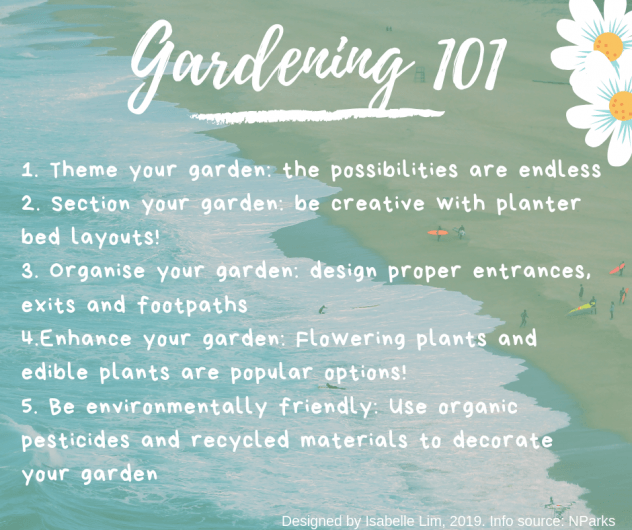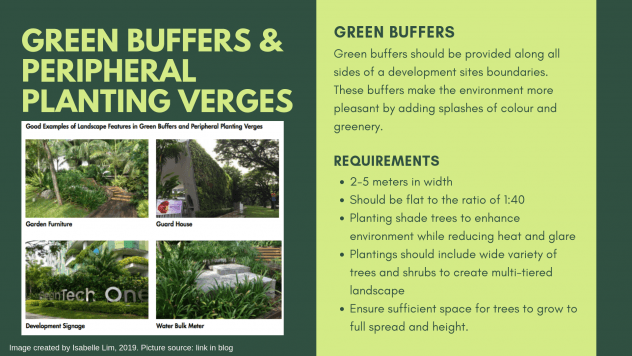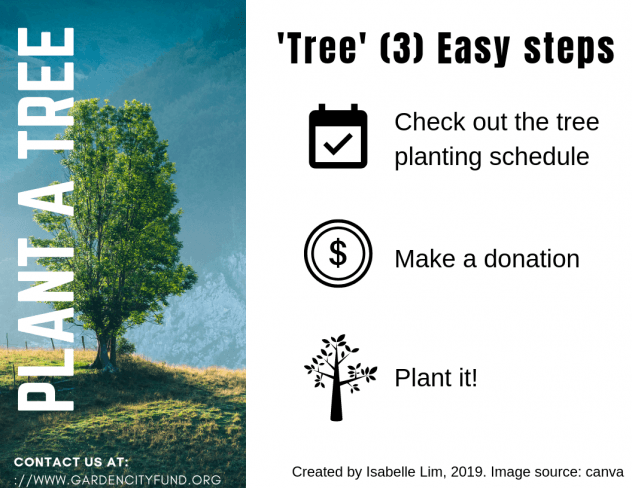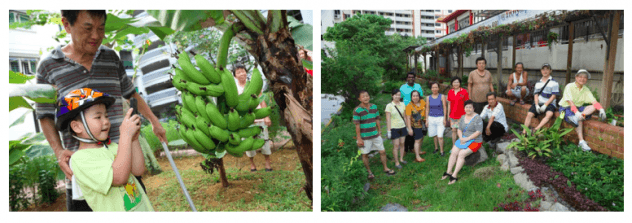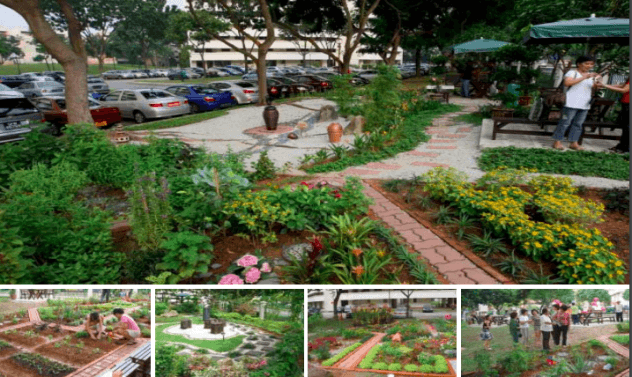Today, Singapore has is not just aiming to be a Garden city but to be a City in the Garden! This concept came about when NParks decided to carrying out a rebranding in 2010 to further enhance the green landscape in Singapore. They hoped to created an integrated network of parks, gardens and greenery that blends seamlessly with with the urban city that resides within. This way we will not just be building trees around the concrete but rather building our city into the natural foliage that we have been blessed with! As much as possible, the City in a garden hopes to preserve the sanctity our natural spaces.
Keeping Singapore green is a collective effort! Here are some initiatives which the government and the community have been involved in to green our island.
Green Urbanisation
In a developing country such as Singapore, construction of infrastructure is a common sight. With an estimated urban growth of 1.5% annually, can Singapore continue to sustain its greenery without compromising on its economic development. The establishment of new facilities often require vast expanses of greenery to be cleared, resulting in the loss of wildlife and greenery. This is an issue that I have personally experienced when 200 trees nears my house was cleared to make way for the up and coming Bukit Canberra integrated hub.
 Artist impression of the new hub which will contain new facilities such as swimming pools and hawker centres for public use. Source.
Artist impression of the new hub which will contain new facilities such as swimming pools and hawker centres for public use. Source.
The once densely populated forested area now remains a stark and barren, it was an eyesore for the eyes. Thankfully, the government recognised the importance of preserving the greenery in residential areas and have came up with a solution. An additional 1000 trees would be planted to replace the felled trees and recreate an even more enhanced green space in the region. Their goal was to build facilities among the forest rather than carelessly place a few trees around the region. It is heartening to see deliberate effort put into maintaining the integrity of our natural terrain. There were also talks of planting a Sembawang tree to instil a sense of community support! You can read more about it here.
This strategy reflects the thoughtful use of integrating greenery into urban landscapes. There are two main ways which the government does this, firstly by using Green buffers and secondly through the construction of Skyrise greenery.
1. Green Buffers
Have you ever wondered how newly developed estates always seem to be enclosed within greenery, or how the open air carparks seem to be shaded by the abundance of trees carparks?
To ensure that newly constructed infrastructures are not devoid of greenery, the government has come up with a set of guidelines for developers to abide by when constructing a land. These set of guidelines can be found here in the ‘Handbook on Greenery Provision and Tree Conservation Guidelines for Development.’ Under these guidelines, one of the requirements is for a green buffer is required to be planted along the site of the development.  Regions of green buffers pointed out in the above image which is obtained from source and edited by blog author
Regions of green buffers pointed out in the above image which is obtained from source and edited by blog author
Green buffers are established planting areas surrounding the boundaries of an area adjoining a public road. These buffers are usually 2-5m wide and are designated areas for trees and shrubs to be planted. They contribute to the overall aesthetic of the region and ensure a pleasant environment by separating noisy roads from urban regions. Similar to a green buffer is the peripheral tree planting verge. These are established planting area surrounding neighbouring developments that unlike green buffers, are not facing the public road. These planting verges are a minimum of 2m wide and provide green spaces for the planting of flora and fauna.
Info graph created by blog author, image obtained from source
These green buffers applied to all types of developments such as:
- Residential areas
- Landed housing
- Multi-story carparks
- Commercial buildings
- Industrials buildings
- Educational institutions
- Places of worship
2. Sky-rise greenery
Why plant horizontally when you can build vertically! Don’t these buildings look amazing? On our tiny island where space is a limited commodity, developers have to be creative in integrating greenery into our concrete jungle. How do they do it? The answer is through the use of skyrise greenery!
Image source: Left, Middle, Right
So what exactly is skyrise greenery? According to NParks:
Skyrise greenery encompasses both rooftop greenery and vertical greenery.
As of 2019, a total area equivalent to 100 football fields is covered by high rise greenery. The government hopes to double this figure by 2030 to produce a total of 200ha of greened buildings, enriching our biodiversity and enhancing our landscape. Building for the future means developing functional and environmentally sustainable buildings. Incorporating sky-rise greenery is the perfect solution due to the benefits it provides. Not only does it add to the aesthetic appeal of the building, it brings about environmental, economic and social benefits.
With careful planning, skyrise greenery enhances our cityscape without the need for a large amount of space. To encourage skyrise greenery in Singapore the government developed the Skyrise Greenery Incentive Scheme (SGIS) and the Landscaping for Urban Spaces and High-rises (LUSH) program. These programs provide incentives to entice developers to incorporate greenery into their building projects.
LUSH was introduced in 2009 and has since contributed towards 40Ha of urban greenery. One of the key requirements of this program was the mandatory replacement of greenery displaced by construction. These replacements can be done on the ground level or through skyrise greenery. Some of the popular features include rooftop terraces and garden installations. This ensured that redevelopments continued to build upon the green landscape and also provide communal green spaces that were easily accessible to the public.
These are some of the possible landscape replacement areas that can be incorporated into new infrastructure. Source
SGIS 2.0 complements LUSH as it provides subsidies and funding for developers who wish to introduce more greenery into their building. Under this scheme there are two types of funding made available for the installation, for Rooftop greenery and vertical greenery respectively. Developers can apply for grants from NParks who will subsidise 50% of greenery installation costs incurred.
Community Initiatives
Government initiatives aside, community events are important as they provide opportunities for like minded people to gather and spread awareness of conservation issues! Working cooperatively to achieve a common goal of greening Singapore instills a sense of ownership and pride in our residents.
1. Tree Planting Day
It started out as a tree planting campaign organised by Prime Minister Lee Kuan Yew who planted at mempat tree at Holland circus. The first official tree planting day was held on 7 Novemeber 1971, when acting Prime Minister, Mr Goh Keng Swee planted the first ever rain tree in Singapore, on Mount Faber. During this day, another 30,000 trees were planted around regions such as Queenstown and Kampong Java Park by members of the public as well as cabinet Ministers.
Left: Mr Goh Keng Swee planting a rain tree to officially launch Singapore’s tree planting day. Right: Mr Lee Kuan yew planting a Mempat tree to kickstart the tree planting campaign
Since that day, Singapore now holds its annual tree planting day on the first Sunday of November. November is known for being the start of the rainy season and thus more economical for tree planting. More rain means less manpower needed to water the trees! On this day trees and shrubs are planted in public spaces such as residential estates, public parks and schools.
This tradition has been carried on till today, and 2019 marks the 48th year since its initiation. Various types of trees have been planted and here are some of them
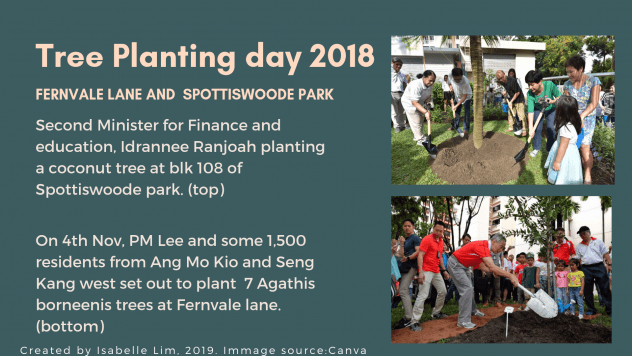
Planting of coconut tree: source
Planting of mangrove tree: source
Additionally, the Plant- A -Tree program was introduced by the Singapore Environment Council and Garden City fund so that individuals can plant their own tree to contribute towards greening efforts. With this program you don’t have to wait till the month of November to plant a tree, instead tree planting activities are carried out on the last Sunday of each month.
All it takes is 3 simple steps. Firstly check out the tree planting schedule which indicates the different planting locations, secondly contribute a small sum to cover the cost of a young tree and then finally plant it! How convenient is that! If you’re interested, click here to find out more
2.Community in bloom
Do you have green fingers, a love for nature and the desire to get together with like-minded individuals? Look no further, the community in bloom program is just for you! Started in 2005 in Mayfair Park Estate, this island-wide gardening movement aims to foster the kampong spirit and engage both young and old citizens to take ownership of our gardens. Today there are over 1000 community gardens set up all across our nation, in our residential estates, educational institutions as well as community centres!
Young and old engaging with the gardens! Source
The beauty of this program is that anyone can participate. Over 36,000 gardening enthusiast and volunteers are actively engaged to help set up new gardening projects, as well as maintain current ones. Community gardening fosters collaboration and communication among residents while promoting a love for gardening as they work together to design the best possible garden.
The sky is the limit when it comes to decorating the gardens. Some residents choose to plant edible fruits, vegetables and herbs which can be shared among members of the community, other choose to grow exotic plants such as the pitcher plant to add a unique twist to your everyday garden. Most of these gardens are adorned with colour blooms and decorative ornaments which brighten up the entire community.
Ivory heights Condominium garden. Source
These gardens are well maintained and environmentally friendly too, each garden has its unique theme making them pleasant to look at! The residents ensure that organic pesticides are used and regularly check the garden for pests and weeds.
An attractive incentive to promote community gardens would be the Community In Bloom awards. This initiative recognises the efforts put in my local gardening groups and rewards them based on their performance in different categories. The award aims to spur the gardening movement in hopes that residents will continue to enjoy gardening and develop a love for environmental stewardship. Winning groups are rewarded with attractive gardening gifts and money prizes to fuel their motivation to keep up the good work. The judging criteria are as follows:
Created by blog author, Isabelle. Source: Canva
The holistic judging criteria ensure residents will pay attention to not just the aesthetic aspect of the garden, but also incorporate environmentally friendly practices that fosters a sense of responsibility towards the environment.
The gardens are then ranked according to different achievements bands as follows:
- Platinum
- Gold
- Silver
- Bronze
- Certificate of participation
Additionally these communities stand a chance to win the following awards under the Excellence and People’s choice awards:
- Diamond award
- Best Community Garden Award
- Best New Community Garden Award
- Special Mention Award
- Edible garden
- Community outreach
- Biodiversity and Environmental Friendliness
- People’s choice awards
Here are some of the platinum award winning gardens
NParks even provides some gardening tips to help enhance the overall appeal of community gardens. Here are some tips that you might find useful! 